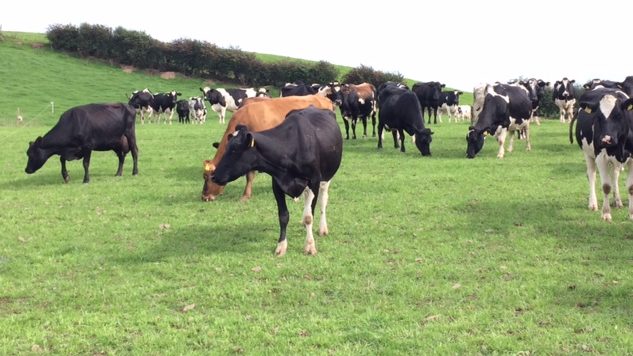As we plan to extend the grazing season, increasing the average farm cover (AFC) is now on most of our minds.
Wet weather and increasing pre-grazing covers are making it the perfect storm. And, as a result, grazing conditions in the north and west of the country have deteriorated considerably.
AFC targets are dependent on stocking rate and sit at a peak of 1,200kg/ha in mid-to-late September.
Unless an autumn grass budget is set up on your grass recording programme, such as AgriNet, it will be difficult to realise grass cover targets.
Excessive build-up will result in huge pre-grazing covers by the balance date – also known as the day when demand exceeds growth.
Low grass utilisation and suppressed regrowths will lead to lower closing clovers and, potentially, earlier housing. Therefore, it’s important to get it right.
At lower stocking rates, or where a large area of silage ground has been reintroduced into the grazing block, it’s important to ensure that the cover per cow is not greater than 400-450kg/cow by the balance date.
Below is an example of a grass budget:
Why use a grass budget?
The greatest advantage of a grass budget is its ability to allow for forward planning; it enables us to understand what grass cover we need to get us through October and early November. It also illustrates the quantity of meal and silage required during the budgetary period.
After entering expected growth rates (based on historical data), the relationship between demand and growth rates will indicate any shortfall.
From this information, you will be able to decide if supplementation or a reduction in stock numbers are necessary to achieve your closing cover target.
Don’t generalise your targets
Typically, for stocking rates over 3LU/ha, the closing cover must be greater than 750kg/ha. If winter or early-spring growth rates are low on your farm, the closing cover target may be as high as 850-900kg/ha.
For high closing covers to be achieved, more than 70% of the grazing block must be grazed in October. Working with groups at this time of the year has shown me that no two farms are the same. And, generalising your targets can prove costly.
Now that most farms have scanned their cows, you will have an idea of how many cull cows you have to sell. This information will allow you to work out what demand you will have next spring; high six-week calving rates will necessitate a high opening cover.
Soil fertility
Autumn is the ideal time to build soil potassium (K) levels. Muriate of potash (MOP) or sulphate of potash (SOP) are the two highest forms of potassium fertiliser available.
SOP is considerably more expensive than MOP, as it contains 18% sulfur. However, it has a lower quantity of K.
Index 1 and low index 2 soils need high quantities to increase soil K. Low K soils produce grass and silage with a low K content. Therefore, attempting to build soil K levels with slurry alone is a waste of time – unless you can import high-K slurry onto your farm.
Applying one bag per acre of MOP or SOP can quickly address a low K issue. It will also lead to increased winter and spring growth rates, as well as lifting grass growth rates on the farm next year.
It is not something you will have to do annually and, while it’s expensive, building soil fertility this autumn is a great investment. For some, it will even help to reduce the tax bill.


